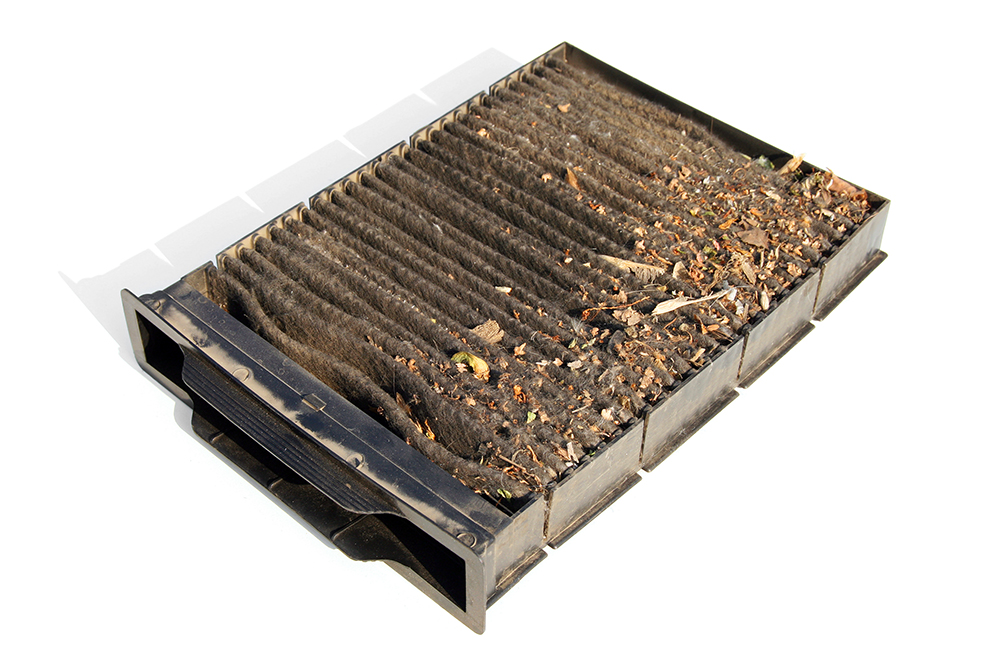WILL THE CABIN FILTER REMOVE HARMFUL CONTAMINANTS FROM AIR THAT IS ALREADY IN THE PASSENGER COMPARTMENT?

Cabin filters were first introduced in European vehicles in the 1980s. Since then, they’ve become standard fare on all cars and trucks sold in the U.S. There’s a lot of harmful contaminants in the air, especially in large cities, and cabin filters keep it out so you can breathe easy. Although the concept is simple, it’s also quite novel. How did we ever live without the venerable cabin filter?
Understanding how a cabin filter works and how filtered air is routed to the interior will help you better appreciate this remarkable invention.
Cabin filter design
Cabin filter construction is pretty simple. Most have a pleated paper filtering element mounted to a plastic frame. Pollutants get trapped in the element, preventing them from entering the vehicle’s interior.
There are two basic types of cabin filters: particulate and activated charcoal. Particulate filters trap dust and debris. Activated charcoal filters do that too, while also absorbing fumes and odors.
Not all cabin air filters are created equal. Some have a greater filtering capacity and are designed to last longer than others.
How filtered air is routed to the interior
The cabin filter is placed in the HVAC (Heating, Ventilation, and Air Conditioning) system’s air intake. Outside air gets pulled into the system by the blower motor. Outside air passes through the cabin filter before it reaches any HVAC components, or the interior. Contaminants such as dust, dirt, and pollen are trapped in the filter. Some filters may also capture fumes and odors. Not only does this provide vehicle occupants with fresh air to breathe, but it also keeps HVAC components clean. This helps the parts perform better and last longer.
Once the filtered air has passed through the HVAC evaporator or heater core, it enters the cabin through the vents. Most of the time, air flows through the cabin filter from outside the vehicle. But, when the HVAC controls are set to recirculation mode, interior air is blown through the filter before re-entering the cabin. This allows the filter to remove harmful contaminants that are already inside the vehicle. Typically, this is only true of cabin filters that are located in the HVAC case. Those mounted in the engine compartment, under the vehicle’s cowl, only filter outside air.
Cabin air filter replacement
It’s important to perform cabin air filter replacement on a regular basis. Left unattended to, the filter becomes clogged with pollutants, preventing it from doing its job. This can lead to a stinky, unhealthy cabin. It can also cause poor HVAC system performance.
Typically, charcoal filter replacement should be done once a year, or every 15,000 miles.
Particulate filters are generally replaced every 30,000 miles. Both filter types should be changed more frequently on vehicles that are driven in dirty, dusty, or high-pollution areas.
Replacing your cabin filter with one from Premium Guard is always a smart choice. Premium Guard cabin filters are available in both particulate and activated charcoal varieties. They trap up to 99% of airborne contaminants to keep your vehicle’s interior fresh.
Sources:
http://www.treffequality.com/download/history-cabin-filters.pdf

